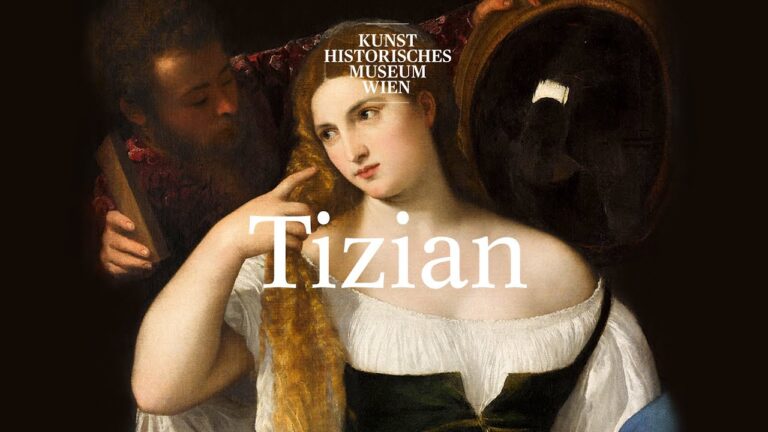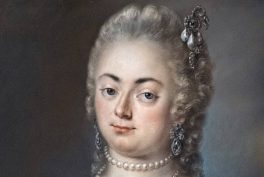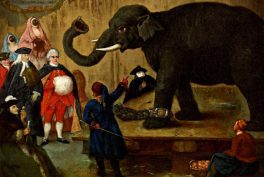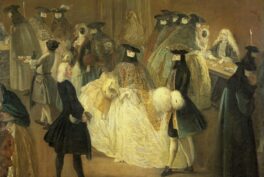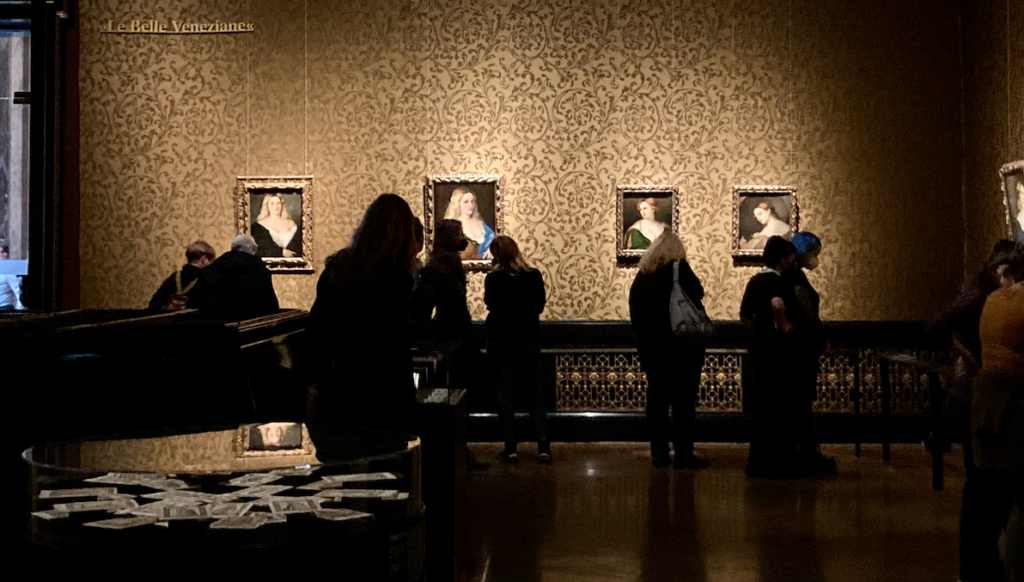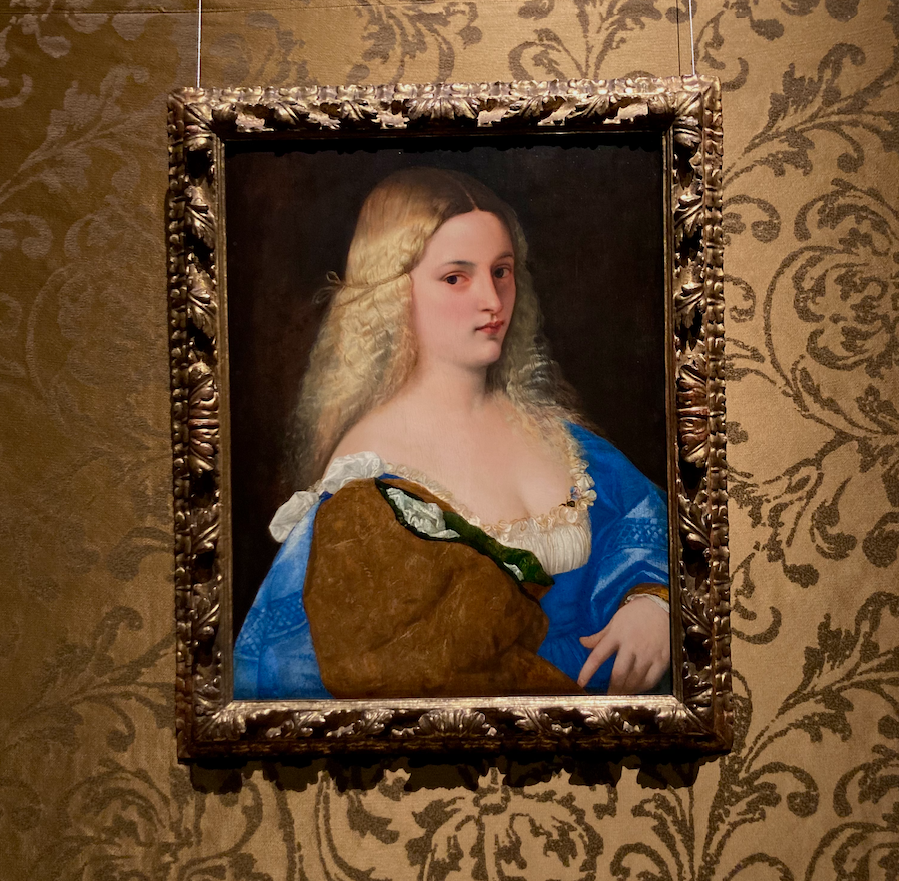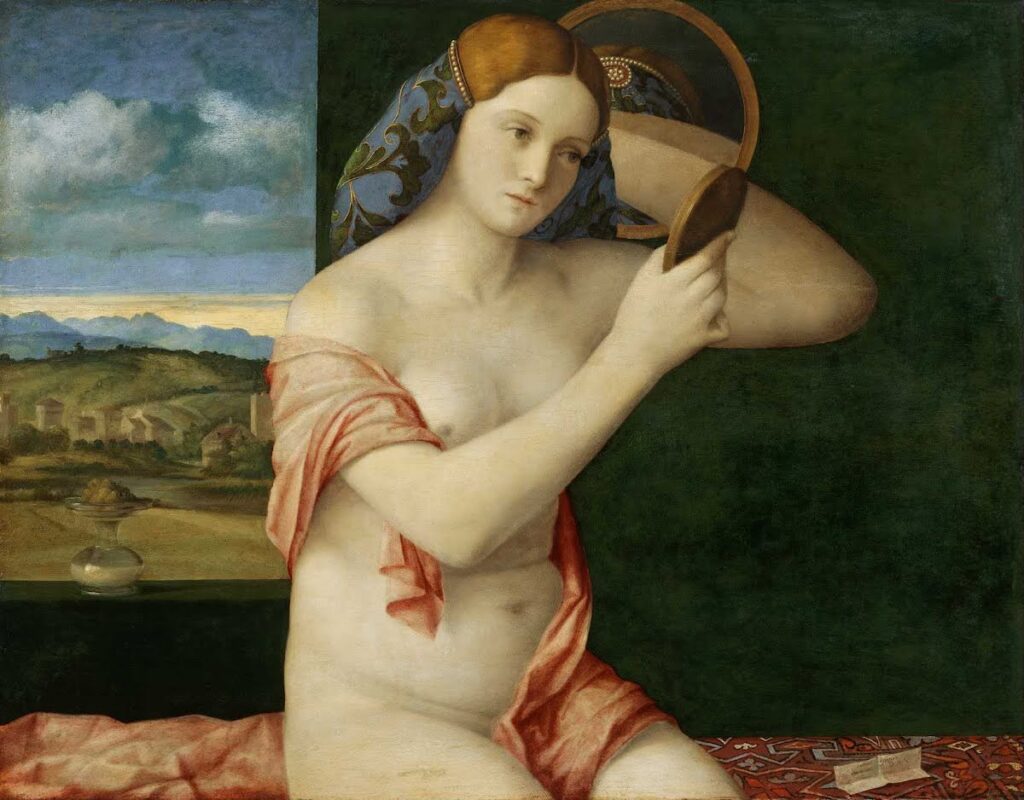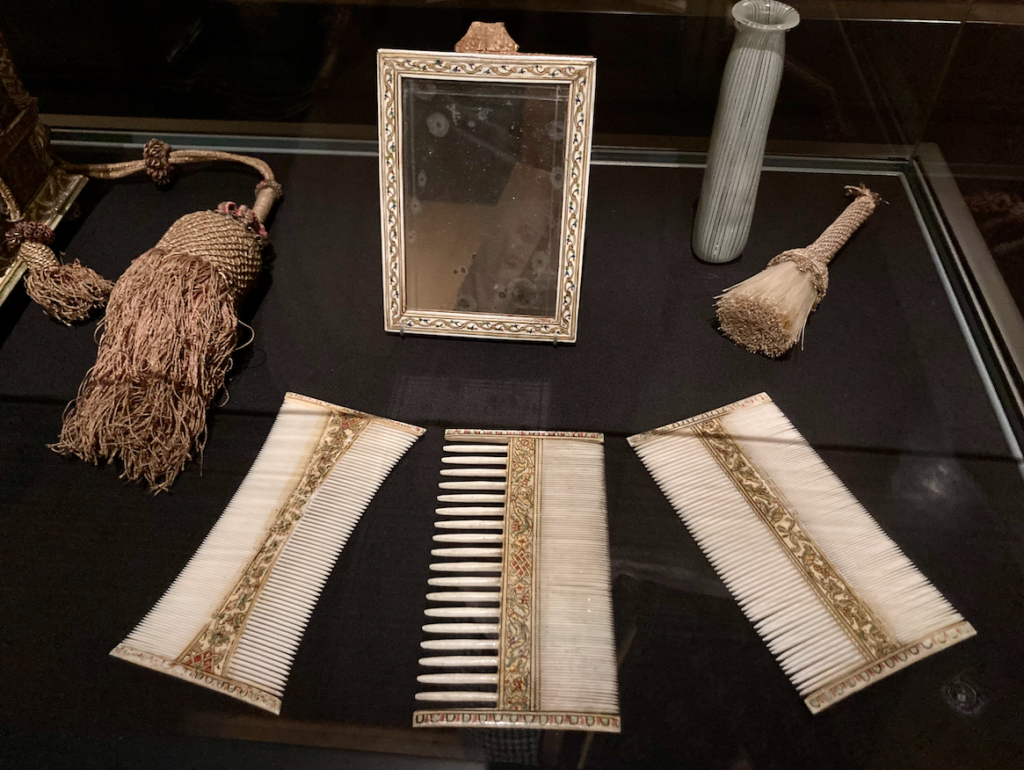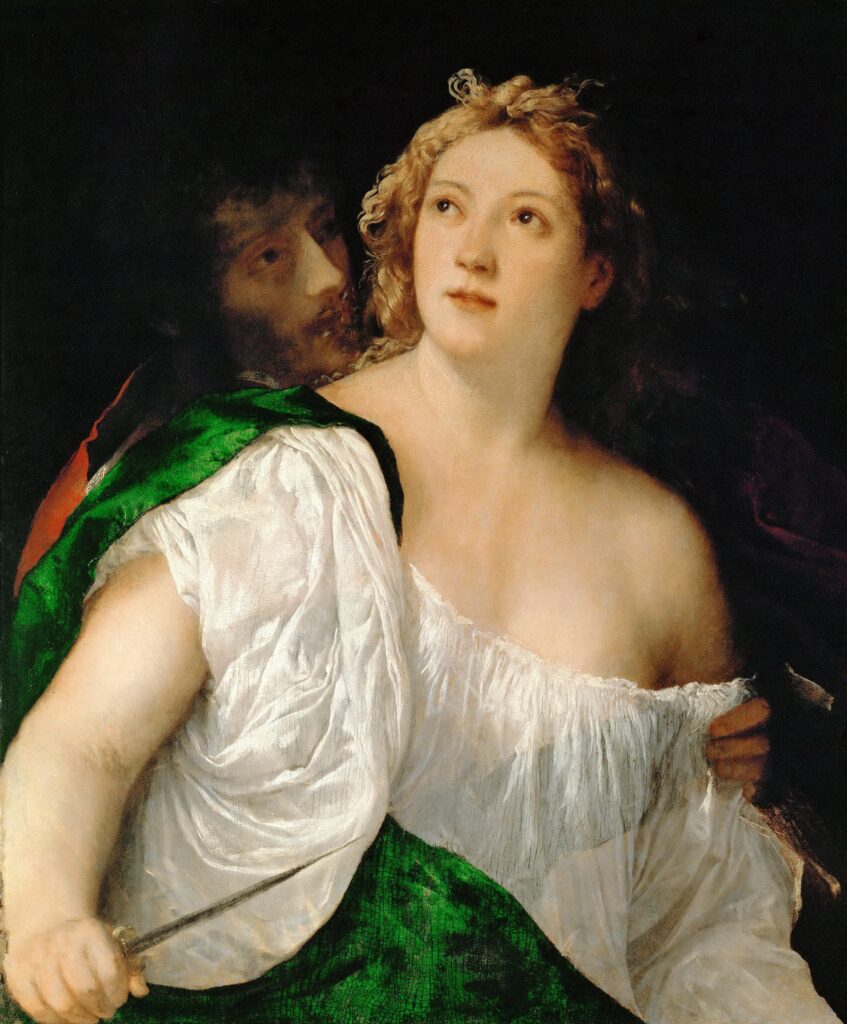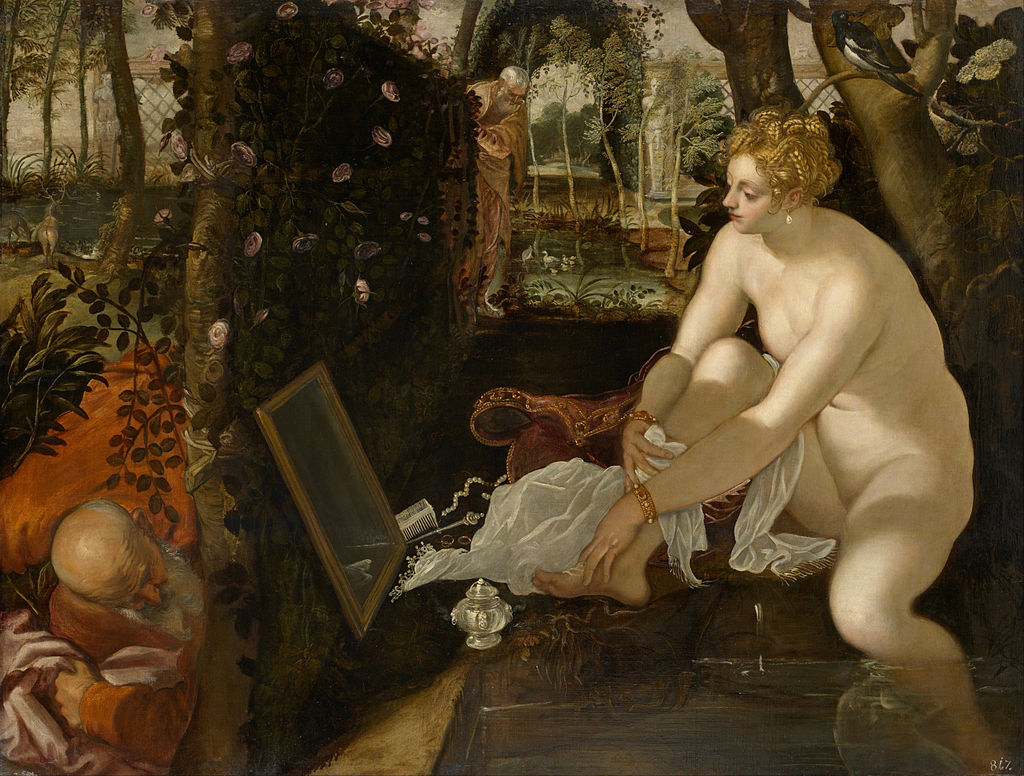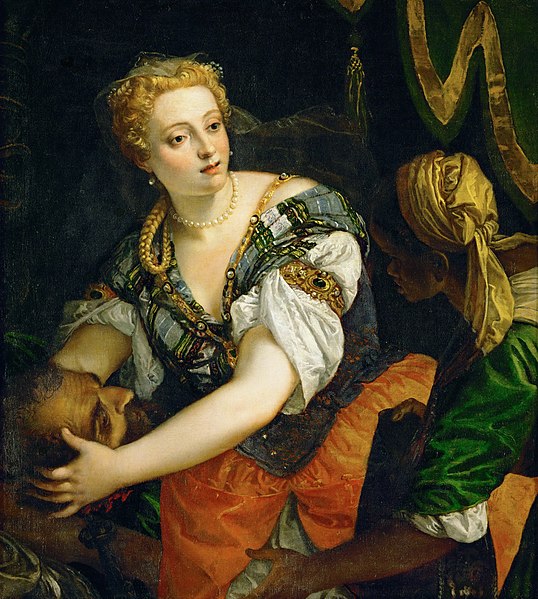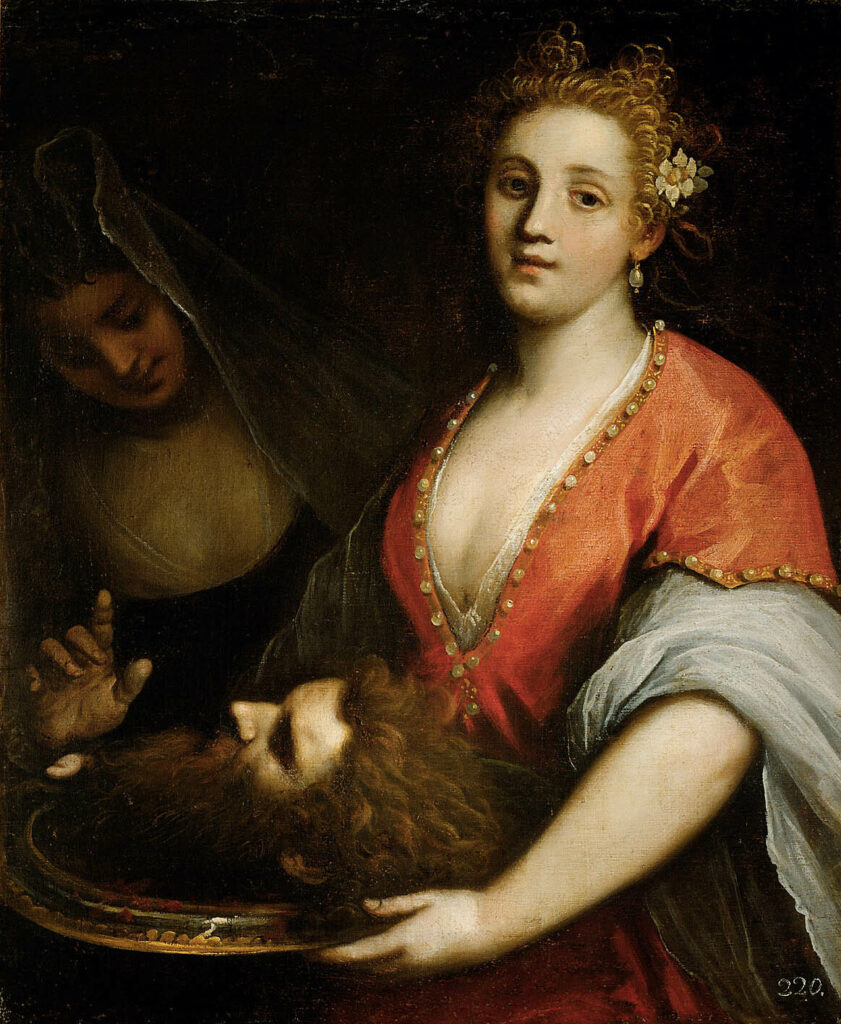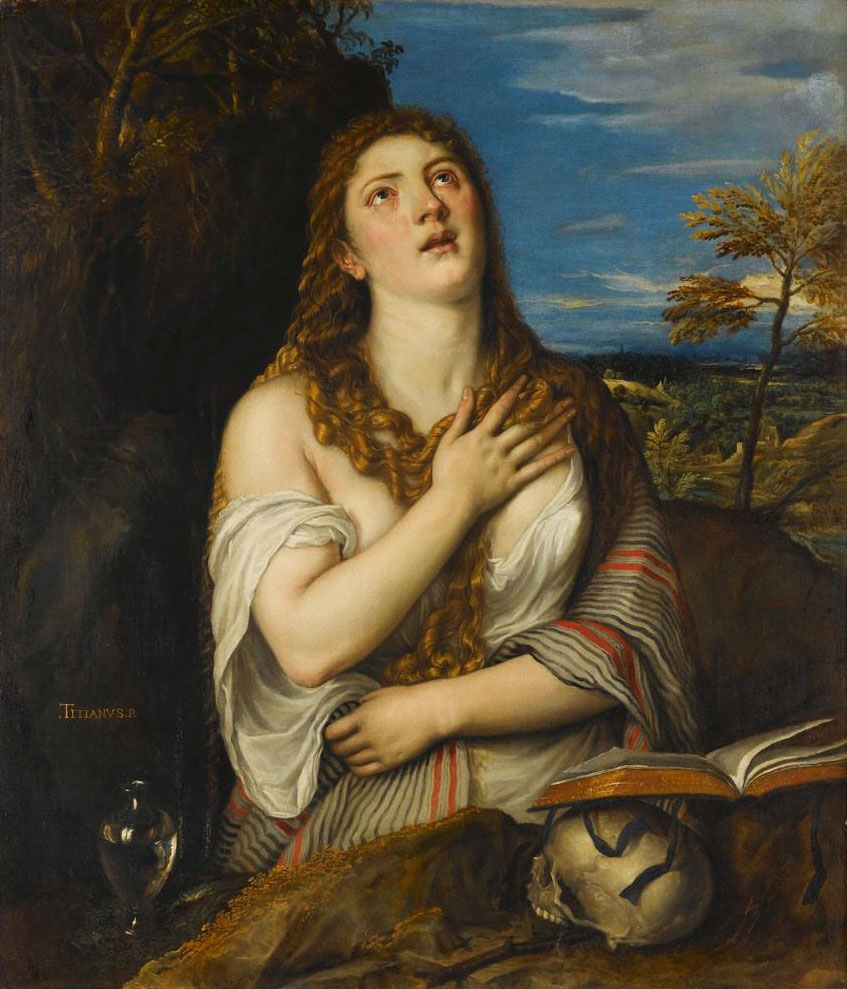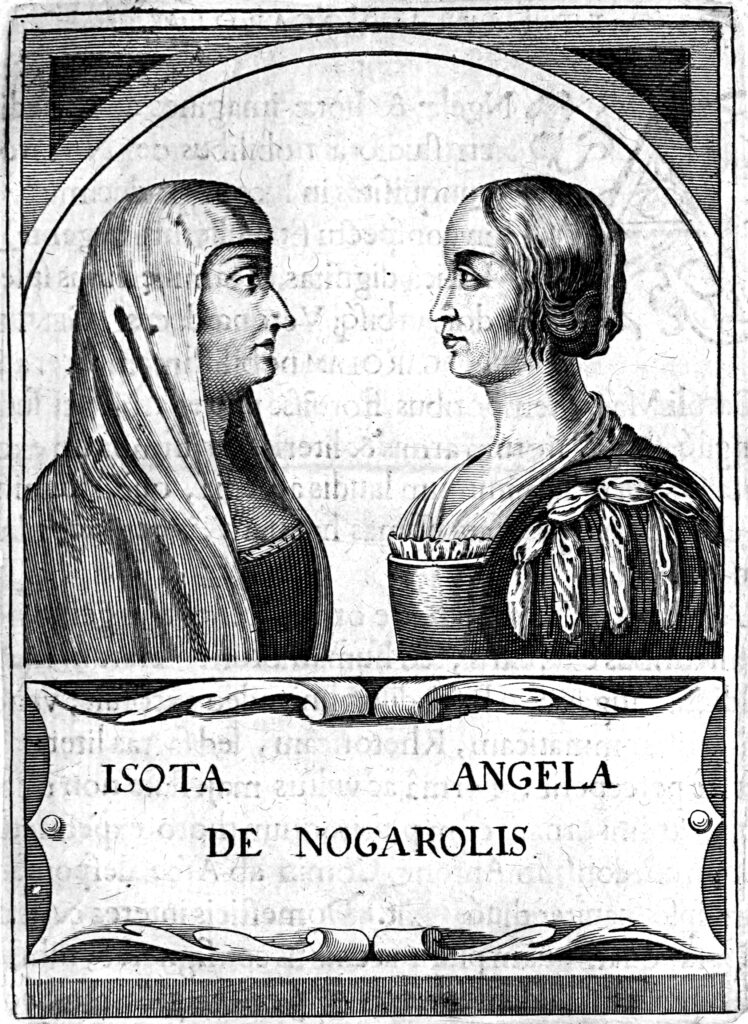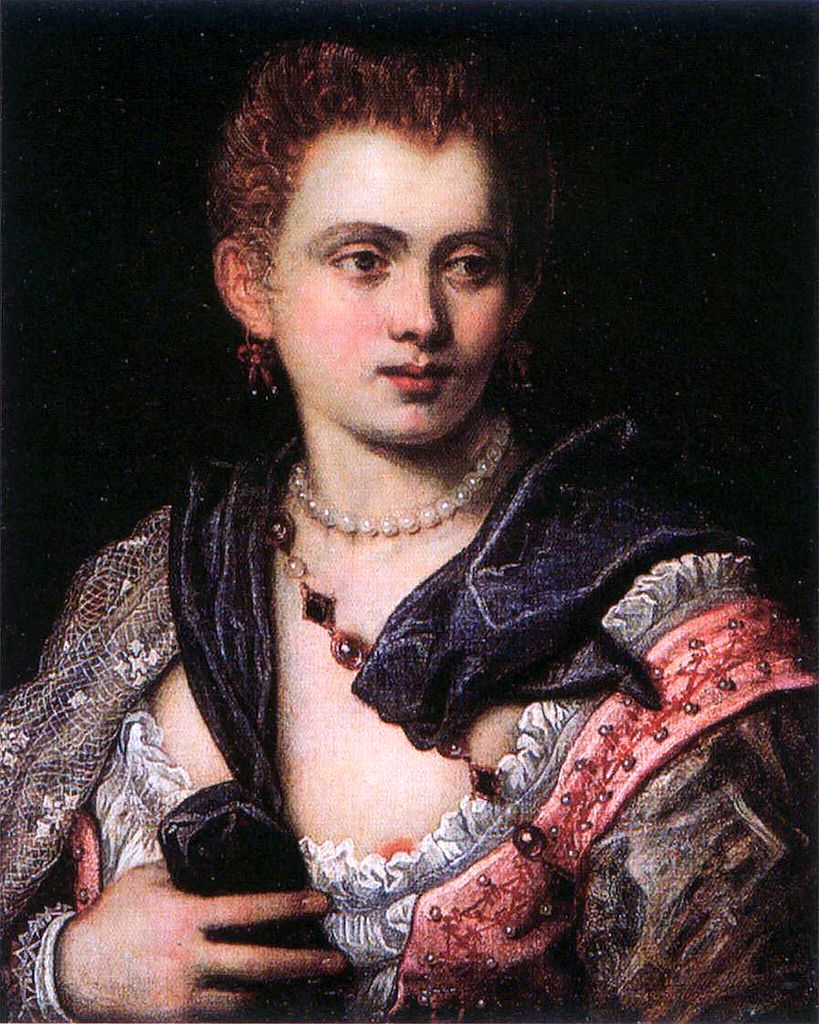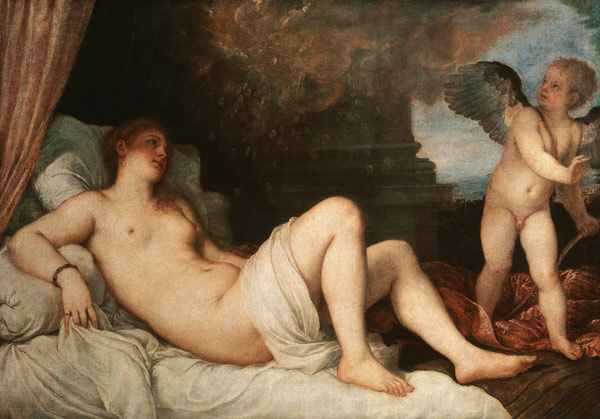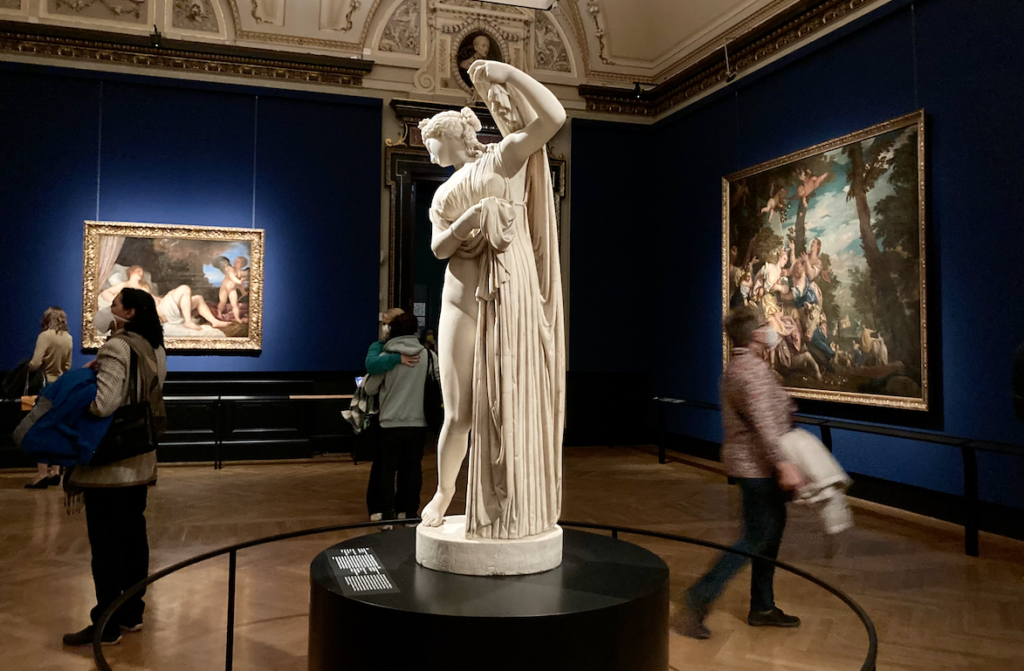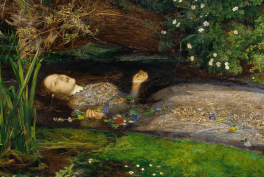The show presents masterpieces by Titian, Palma Vecchio, Lorenzo Lotto, Paris Bordone, Jacopo Tintoretto, and Paolo Veronese – all of them belonged to the Venetian school of painting, which in the 16th century was a thriving and influential artistic environment that greatly informed the subsequent development of European painting.
In this article I will present a selection of most interesting stories and aspects from the show, but I highly encourage you to visit the exhibition in person whenever you will have time and chance to visit Vienna.
La Belle Veneziane
The show is narrated through sections divided by iconographical categories, such as ‘Le Belle Veneziane’ as seen below. This particular genre emerged in the early 16th century and features half-length depictions of women inspired by contemporary love poetry and literature. These idealized “portraits” were somewhat close to realistic portraiture, earlier identified as images of courtesans, but recently agreed to depict poetic depictions of brides and newlyweds.
Does it look familiar? Yes, mirrors were a versatile iconographical tool for Renaissance artists, who used it in their compositions to tell a story not only of the mythological Narcissus, but also to express the artist’s prowess in depicting additional perspectives and to play a role in the dispute (paragone) over the merits of painting and sculpture.
It is thought that Giovanni Bellini executed this painting as a form of competition with Titian, who also painted a young woman with a mirror around the same time. Bellini invites us viewers to observe this young woman in a private and intimate setting. She is sitting on a bench, almost fully naked, gazing into her reflection in the mirror. Her hair is gathered in an elegant hair snood decorated with pearls, which indicates that this young, almost statuesque, woman is newly wed, as it was customary for married women to wear their hair up.
The Embodiment of Virtue
In the 16th century, female figures appeared often in Venetian painting as embodiments of virtue, chastity, and humility, expressed by their beauty – as people believed that a beautiful body symbolized a beautiful mind. Artists were particularly inspired by episodes from the Bible, ancient Roman history, and the lives of the saints. What these female figures had in common? Beauty. And what values they all represented? Courage, self-sacrifice, and determination.
Learn the stories of famous heroines in art by clicking in the gallery.
